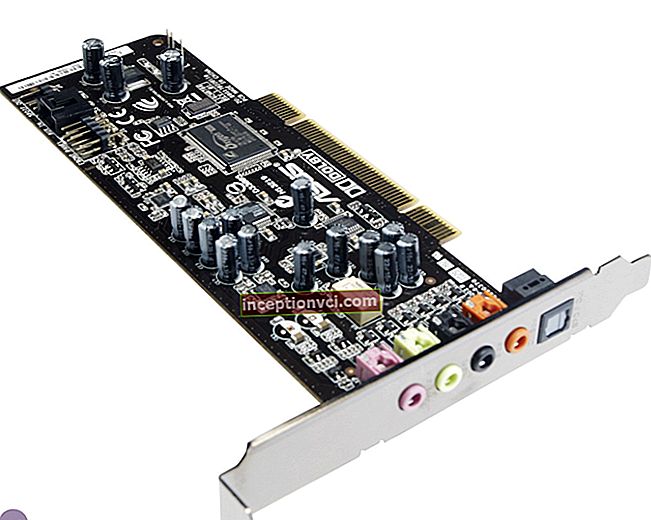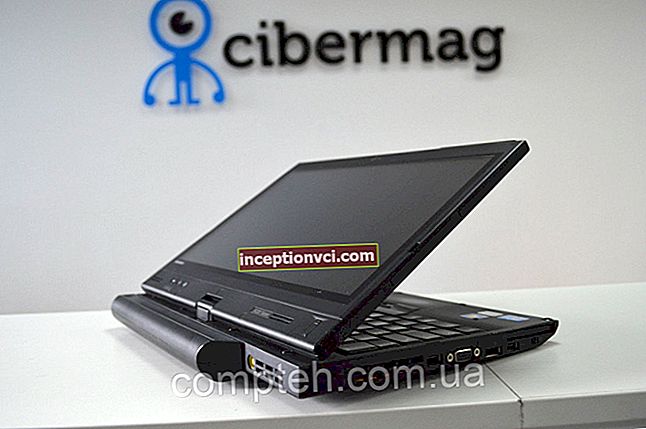Introduction
The Canon PowerShot SX120 IS is a 10 megapixel digital camera equipped with a 10x optical image stabilizer zoom lens. The lens offered by the manufacturer supports a focal length range of 36mm to 360mm, as well as a 3-inch LCD screen, DIGIC 4 processor and face recognition technology. The camera has 20 shooting modes, including Smart Auto and Easy Mode for beginners and Full Manual for more experienced photographers. The camera supports high sensitivity settings up to ISO1600, VGA movie recording at 30 frames per second, and is powered by AA batteries. And this is just a small honor for the functions of this camera.
Design and use
The SX120 camera has not changed much in appearance compared to its predecessor, the Canon PowerShot SX120IS, the matrix has gained only one million pixels. The design of the camera hasn't changed significantly - the buttons are large enough to suit the whole family. Nor did the lens add up, offering us a focal length range equivalent to 36mm to 360mm in a 35mm camera also equipped with optical image stabilization, which helps to reduce camera shake during shooting.

Although the focal lengths that are provided in the camera clearly do not classify it as a superzoom camera, the camera is so good that it will definitely find its fans. The camera body is made of plastic, which the manufacturer disguised as a pleasant-looking matte black finish. He also provided the camera with support for SD memory cards, which are now very common. The camera is powered by two AA batteries, which makes the weight of the camera a little more, but it is pleasant to lie in your hand and take pictures with it even more pleasant. But still, there are not big drawbacks, I would like to see a hot shoe connector for an additional flash in the camera, since the built-in flash is not always enough for the implementation of creative ideas.

The front of the SX120 IS is dominated by a lens, most of which is hidden flush with the front panel, when you press the slightly recessed on / off button, which is in the shape of a diamond and located at the top in a few seconds, the lens leaves the body to a wide-angle focal length. The left side of the case is slightly wider in order to make it easier to hold the camera, right there you will find three narrow slits indicating the presence of a built-in microphone for recording sound. And to the right of the lens, you'll find a rounded autofocus window that also serves as a self-timer indicator.
While the above changes have largely failed to improve camera ergonomics, there is a more important oversight when it comes to practice. There is no viewfinder in the camera, but the place where it is usually occupied by the built-in flash. On the side of the small handle we find loops for attaching the strap and a sliding plastic cover, under which are the AV, mains power and USB ports.

The top of the SX120 IS contains all the elements for easy control over shooting. There is a shooting mode wheel, an on / off button and a start button that surrounds the zoom slider. The mode wheel is almost recessed into the top of the case, although the dial itself is ribbed enough to be turned on with your thumb. The rotation of the mode control wheel is hard with a click, this is done so that you can accurately set the parameter required at the moment.
Let's dwell on the modes in more detail. The first is the new Auto Intelligent Mode, which automatically selects from 18 different scenes. Further, if you move clockwise, there are auto program, shutter priority, aperture priority and manual which are intended for people who prefer to choose parameters.The mode selection is also displayed on the back of the LCD screen so you don't have to take your eyes off your subject when making adjustments. Then we see a program that allows you to shoot video in VGA quality, a choice of scene programs (including fireworks, snow, an aquarium and a high sensitivity mode ISO3200), a mode dedicated to shooting fast moving objects (children and pets), a night scene, a mode landscape plus and portrait mode. The most recent is the beginner mode (fully automated).
When the camera is turned on, which takes no more than two seconds, the zoom movement is smooth and soft, although its movement is accompanied by the sound of mechanical noise. More importantly, when you press the release button halfway down, the SX120 IS instantly detects exposure and adjusts autofocus, while there is no noticeable shutter lag. The camera is much faster than its predecessor as the new DIGIC 4 processor is installed in the camera.
A convenient automatic red-eye correction is also available in the camera using the flash setting option, however, this setting is quite hidden in the menu, which reduces the speed of its adjustment. Unfortunately, the camera does not have a dedicated switch on the back of the flash like the SX110 had, but the function is turned on by default, not turned off as it was before. Video quality is still the standard 640x480 pixels, with a high frame rate of 30 frames per second which allows for more realistic motion and sound. The only disappointing thing is the inability to use the 10x optical zoom when shooting video, you can only use the 4x digital zoom when shooting (albeit with a certain loss of quality).

On the back of the SX120 IS, we find a 3-inch 230K-dot LCD screen. On the right is a four-button control panel, made in the form of a circle in the center, of which there is a button that is responsible for selecting a function. Below are the Menu buttons and the display. When you press the "Menu" button in shooting mode, the screen displays two tabs, one with shooting options and the other with general function settings. Pressing the "menu" button in playback mode gives access to the same bookmarks plus a print folder selection and a third folder setting. If you've used a Canon camera before, then menu navigation will be pretty familiar to you. Above the four-button panel are two more buttons, a dedicated face detection on / off button and an exposure compensation button.
The face recognition function has been improved, the use of the new DIGIC 4 processor has allowed the system to recognize up to 35 faces in the frame and automatically adjusts focus and exposure. Face detection includes automatic red-eye correction, face detection, and a new feature that waits for a new face to appear in the frame before taking a photo.
The playback function has its own button on the back of the camera. Also, using the four-button joystick, you can adjust ISO values (Auto, ISO 80 to 1600), flash settings, delay timer and select the function of continuous shooting, as well as macro mode or manual focus. It provides users with the center of the screen to check the focus setting.
As you would expect, on the bottom of the camera there is a tripod mounting thread and a cover, under which there are two AA batteries and a slot for an SD memory card. The lid opens easily by sliding to the side, and when closing, you have to push down on the batteries to close the lid back.
As you can see, the camera has got a faster processor, improved face recognition system, which will help you in new great photos.
Photo and video quality
The main disadvantage in terms of image quality is noise, starting from ISO400, there is some noise, blurring of details and slight color discoloration.As you select ISO800 and ISO1600 sensitivities, the amount of noise and loss of detail will increase.
The camera handles chromatic aberration well, only in high contrast conditions does the effect of purple halos appear. 10 megapixel images were a little washed out when using the default sharpness settings and either require further processing in applications such as Adobe Photoshop, or you must change the settings in the camera.
When working in night shooting conditions, the camera showed itself to be on the good side, with a maximum exposure of 15 seconds will allow you to get enough light for most situations. When shooting, a macro lens allows you to focus on an object that is only 1 cm away from the camera, but you will see a lot of distortion when shooting from such a close distance. Image stabilization works very well, it allows you to remove hand shake when shooting and using the camera at a long focal length.
A few examples taken with the Canon PowerShot SX120 IS




Sample video recorded with Canon PowerShot SX120 IS
Canon PowerShot SX120 IS Technical Specifications
Matrix: 1 / 2.5''inch size, CCD type;
Number of pixels: 10 megapixels;
Processor: DIGIC 4;
Lens:
Focal length: 36-360mm;
Zoom: optical 10x, digital 4x, combined 40x;
Aperture: f / 2.8 - f / 4.3;
Structure: 10 elements in 9 groups (1 aspherical element);
Stabilization: optical;
Exposition:
Type: TTL;
Metering modes: evaluative metering (AF frame), center-weighted averaged metering, spot metering (center);
Exposure change: 2 EV in 1/3-stop increments.
Autofocus: point AF with face detection technology, one point AF (with fixed center);
Autofocus mode: single frame, continuous;
Autofocus size: standard, reduced;
Autofocus distance: from 1 cm;
Sensitivity: AUTO, 80, 100, 200, 400, 800, and 1600;
Exposure time: 15 seconds - 1/2500 seconds;
White balance: auto (including white for face detection), daylight, cloudy, incandescent, fluorescent, fluorescent, custom;
Monitor: 3.0 "inches, 230 thousand points, 100% visibility;
Flash: auto, manual, red-eye removal,
Shooting Modes: Scene Recognition Auto and Motion Detection, Program, Shutter Priority, Aperture Priority, Manual, Portrait, Landscape, Children, Smile Detection, Poster Mode, Fish eye Mode, Beach Mode, Snow Mode;
Image size: 3648 x 2736 pixels, 2816 x 2112 pixels, 1600 x 1200 pixels, 640 x 480 pixels.
Video recording size: 640 x 480 pixels 30 frames per second, 320 x 240 pixels 30 frames per second;
Photo file type: JPEG, DPOF;
Movie file type: AVI;
Direct printing: to Canon printers;
Shooting Delay: 2 seconds to 10 seconds;
Computer connection: USB, Mini USB;
Video connection: AV-out;
Memory card: SD, SDHC;
Power supply: two AA batteries;
Working environment parameters: from 00 to 40 ° C, from 10% to 90% humidity;
Dimensions: 110.6mm x 70.4mm x 44.7mm;
Weight: 245g.
Conclusion
In practice, it turned out that the Canon PowerShot SX120 IS is practically the same as its predecessor, but it remains an affordable and good zoom camera that should appeal to both beginners and serious photographers.
Canon PowerShot SX120 IS is slightly cheaper than other manufacturers' models. The camera has 10 megapixels, a new automatic intelligent mode, faster processing thanks to the DIGIC 4 processor, and an improved face recognition system. Plus 10x zoom, large LCD screen, easy controls for beginners, and manual modes for those looking for a pocket-sized alternative to DSLRs.
However, it is worth noting the negative aspects of the camera. The camera has enough charge of a pair of AA alkaline batteries for half a day, the optical zoom is still not possible when shooting video, there is no stereo sound and HD video recording, the zoom mechanism is very audible and noise appears in images if you use values above ISO 400.
Canon has, as always, produced a good PowerShot SX120 IS with a good low price and a 10x zoom lens that delivers consistently good results.









